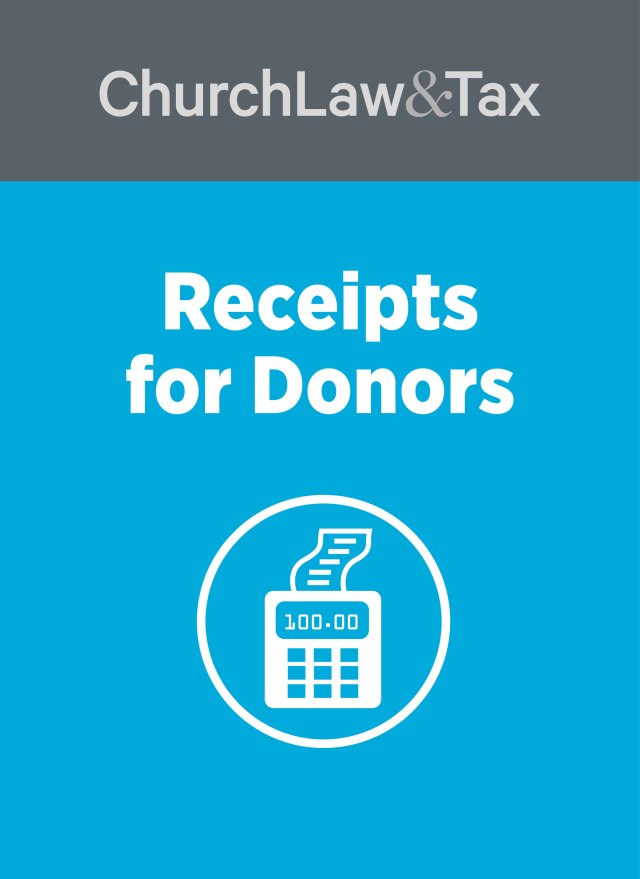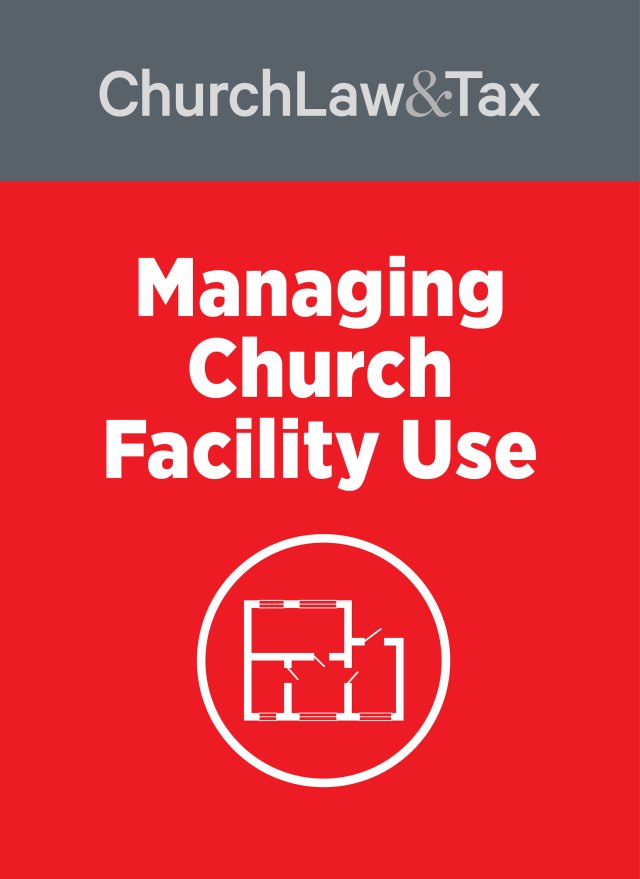How church treasurers can comply with the rules.
Charitable contributions to churches and other tax-exempt organizations are deductible only if they satisfy certain conditions. One important condition is that the donor must be able to substantiate the contribution.The substantiation requirements vary depending on the kind of contribution.
Church treasurers can comply with the substantiation and quid pro quo reporting requirements in a number of ways. The rules for substantiating chariTable contributions are summarized in the following Table.
Rule
Form Of Contribution
Substantiation Requirements
| 1 | Cash contributions | All cash contributions, regardless of amount, must be substantiated with (1) either a bank record (such as a cancelled check) or a written communication from the charity (2) showing the charity’s name, date of the contribution, and the amount of the contribution. These requirements may not be satisfied by maintaining other written records. |
| 2 | Individual cash contributions of 0 or more | Donors will not be allowed a tax deduction unless they receive a written receipt from the church or charity that satisfies the following requirements: (1) the receipt must be in writing; (2) the receipt must identify the donor by name (a Social Security number is not required); (3) the receipt may combine all contributions, even those that are for 0 or more, in a single amount, or it can list each contribution separately to aid donors in resolving discrepancies; (4) the receipt must state whether the church provided any goods or services to the donor in exchange for the contribution, and if so, the receipt must include a good faith estimate of the value of those goods or services; (5) if the church provides no goods or services to a donor in exchange for a contribution, or if the only goods or services the church provides are intangible religious benefits, the receipt must contain a statement to that effect; (6) the written acknowledgment must be received by the donor on or before the earlier of the following two dates: the date the donor files a tax return claiming a deduction for the contribution, or the due date (including extensions) for filing the return. |
| 3 | Quid pro quo cash contributions of or less | Quid pro quo contributions (part contribution and part payment for goods or services received in exchange) of less than are deductible to the extent they exceed the value of the goods or services provided in exchange. |
| 4 | Quid pro quo cash contributions of more than |
In addition to the requirements of Rule 2 (if applicable), the church must provide a written statement to the donor that (1) informs the donor that the amount of the contribution that is tax-deductible is limited to the excess of the amount of cash contributed by the donor over the value of any goods or services provided by the church in return; and (2) providesthe donor with a good faith estimate of the value of the goods or services furnished to the donor.
Note: a written statement need not be issued if only token goods or services are provided to the donor having a value of or 2 percent of the amount of the contribution, whichever is less, or if the donor receives solely an intangible religious benefit that generally is not sold in a commercial context outside the donative context. |
| 5 | Individual contributions of noncash property valued at less than 0 |
Church receipt. Substantiate with a receipt that lists the donor’s name, the church’s name, the date and location of the contribution, and a description (but not value) of the property.
Donor’s records. The income tax regulations require that all donors of noncash property maintain reliable written records with respect to each item of donated property that include the following information: (1) name and address of the church; (2) date and location of contribution; (3) detailed description of property; (4) fair market value of property at time of contribution, including description of how value was determined; (5) cost or other basis of property; (6) if less than the donor’s entire interest in property is donated during the year, an explanation of the total amount claimed as a deduction in the current year; and (7) the terms of any agreement between the donor and church relating to the use, sale, or other disposition of the property. |
| 6 | Individual contributions of noncash property valued at 0 to 0 |
Church receipt. The church’s receipt must contain the information in items (1) through (3) listed under Rule 5 and comply with the “written acknowledgment” requirements under Rule 2.
Donor’s records. The donor’s written records must include all 7 items of information listed under Rule 5. |
| 7 | Individual contributions of noncash property valued by the donor at 0 to ,000 |
Church receipt. See Rule 6.
Donor’s records. Donors who claim a deduction over 0 but not over ,000 for a noncash chariTable contribution must have the acknowledgment and written records described under Rule 6, and their records must also include (1) a description of how the donor acquired the donated property, for example, by purchase, gift, bequest, inheritance, or exchange; (2) the approximate date the donor acquired the property; and (3) the cost or other basis, and any adjustments to the basis, of property held less than 12 months, and, if available, the cost or other basis of property held 12 months or more. This requirement, however, does not apply to publicly traded securities. In addition, a donor must complete the front side (Section A, Part I, and Part II if applicable) of IRS Form 8283 and enclose the completed form with the Form 1040 on which the chariTable contribution is claimed. |
| 8 | Quid pro quo contributions of noncash property | The quid pro quo rules explained under Rules 3 and 4 apply to contributions of property as well. |
| 9 | Individual contributions of noncash property valued at more than ,000 | In addition to complying with Rule 5, a donor must obtain a qualified appraisal of the donated property from a qualified appraiser and complete a qualified appraisal summary (Section B of Form 8283) and have the summary signed by the appraiser and a church representative; the completed Form 8283 is then enclosed with the Form 1040 on which the chariTable contribution deduction is claimed. |
| 10 | Donations of (a) cars, boats, or planes; (b) stock; or (c) clothing and household items |
(a) Cars, boats, and planes Church sells vehicle with no significant use or alteration. The church must (1) issue a written acknowledgment to the donor, within 30 days of the sale, containing the donor’s name and Social Security number, date of contribution, vehicle identification number, date of sale, certification that the vehicle was sold in an arm’s-length transaction, a statement of the gross proceeds from the sale, a statement that the deductible amount may not exceed the amount of the gross proceeds, and whether the church provided any goods or services in consideration of the donation (and a description and good faith estimate of the value of any such goods or services, or, if the goods or services consist solely of intangible religious benefits, a statement to that effect); and (2) submit the same information to the IRS by February 28 of the following year. IRS Form 1098-C must be used to submit the information to the IRS and may be used to provide the required information to the donor. Church sells vehicle at a price significantly below fair market value (or gratuitously transferred) to needy individual in direct furtherance of its exempt purpose. The church must (1) issue a written acknowledgment to the donor, within 30 days of the date of contribution, containing the donor’s name and Social Security number, date of contribution, vehicle identification number, certification that the charity will sell the qualified vehicle to a needy individual at a price significantly below fair market value (or, if applicable, that it will gratuitously transfer the vehicle to a needy individual) and that the sale (or transfer) will be in direct furtherance of the charity’s exempt purpose of relieving the poor and distressed or the underprivileged who are in need of a means of transportation, and whether the church provided any goods or services in consideration of the donation (and a description and good faith estimate of the value of any such goods or services, or, if the goods or services consist solely of intangible religious benefits, a statement to that effect); and (2) submit the same information to the IRS by February 28 of the following year. IRS Form 1098-C must be used to submit the information to the IRS and may be used to provide the required information to the donor. The church “significantly uses or materially improves” the car. The church must (1) provide the donor with a written acknowledgment, within 30 days of the date of the contribution, containing the donor’s name and Social Security number, date of contribution, vehicle identification number, certification and detailed description of the intended significant intervening use by the charity and the intended duration of the use or the intended material improvement by the charity, and a certification that the qualified vehicle will not be sold before completion of the use or improvement, and whether the church provided any goods or services in consideration of the donation (and a description and good faith estimate of the value of any such goods or services, or, if the goods or services consist solely of intangible religious benefits a statement to that effect); and (2) submit the same information to the IRS by February 28 of the following year. IRS Form 1098-C must be used to submit the information to the IRS and may be used to provide the required information to the donor. Note: A qualified appraisal (see Rule 9) is required for a deduction in excess of ,000 for a qualified vehicle if the deduction is not limited to gross proceeds from the sale of the vehicle. (b) Stock. Gifts of stock are subject to special substantiation rules. Note the following:
(c) Clothing and household items |
Church Law & Tax Report is published six times a year by Christianity Today International, 465 Gundersen Dr. Carol Stream, IL 60188. (800) 222-1840. © 2008 Christianity Today International. editor@churchlawandtax.com All rights reserved. This publication is designed to provide accurate and authoritative information in regard to the subject matter covered. It is sold with the understanding that the publisher is not engaged in rendering legal, accounting, or other professional service. If legal advice or other expert assistance is required, the services of a competent professional person should be sought. “From a Declaration of Principles jointly adopted by a Committee of the American Bar Association and a Committee of Publishers and Associations.” Annual subscription: $69. Subscription correspondence: Church Law & Tax Report, PO Box 37012, Boone, IA 50037-0012.




